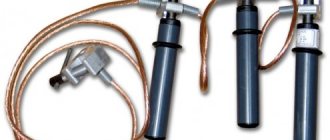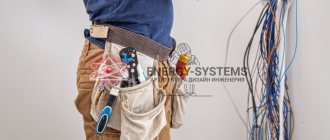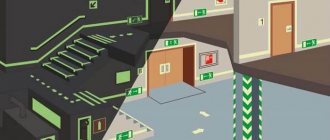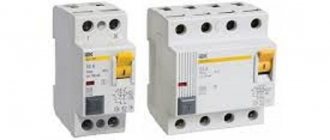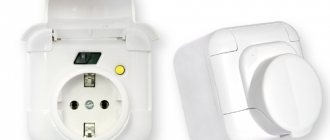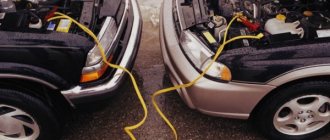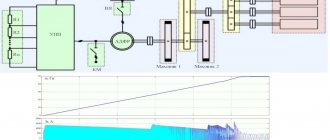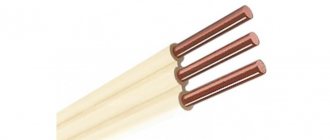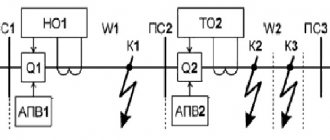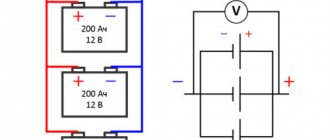Preface
Approved by the Minister of Fuel and Energy of the Russian Federation on October 6, 1999.
“Rules for the construction of electrical installations” (PUE) of the seventh edition due to the long processing period (for at least two years) will be issued and introduced in separate sections and chapters as work on them is completed review, agreement and approval.
This publication includes sections and chapters (seventh edition) prepared by JSC VNIPI Tyazhpromelektroproekt jointly with the Roselectromontazh Association:
Section 6 “Electrical lighting”, consisting of:
- Chapter 6.1 – General part;
- Chapter 6.2 – Interior lighting;
- Chapter 6.3 – External lighting;
- Chapter 6.4 – Illuminated advertising, signs and illumination;
- Chapter 6.5 – Lighting control;
- Chapter 6.6 – Lighting devices and electrical installation devices;
Section 7 “Electrical equipment of special installations”:
- Chapter 7.1 – Electrical installations of residential, public, administrative and domestic buildings;
- Chapter 7.2 – Electrical installations of entertainment enterprises, clubs and sports facilities.
When preparing these chapters of the PUE, the requirements of state standards (in particular GOST R 50571), building codes and regulations, and recommendations of scientific and technical councils of leading electric power organizations were taken into account. The project was reviewed by the working groups of the Coordination Council for the revision of the PUE.
Section 6, chapters 7.1 and 7.2 have been agreed upon with the State Construction Committee of Russia, the Main Directorate of the State Fire Service of the Ministry of Internal Affairs of Russia, RAO UES of Russia, JSC VNIIE and submitted for approval by the Department of State Energy Supervision and Energy Saving of the Ministry of Fuel and Energy of Russia.
The requirements of the “Rules for the Construction of Electrical Installations” are mandatory for all organizations, regardless of their legal form, as well as persons engaged in business activities without forming a legal entity.
From July 1, 2000, Section 6, Chapters 7.1 and 7.2 of Section 7 of the “Rules for Electrical Installations”, sixth edition, become invalid.
Gosenergonadzor
Chapter 6.1. a common part
Application area. Definitions
6.1.1. This section of the Rules applies to installations of electric lighting of buildings, premises and outdoor lighting structures in cities, towns and rural settlements, territories of enterprises and institutions, installations of long-term health ultraviolet irradiation, installations of illuminated advertising, illuminated signs and illumination installations.
6.1.2. Electric lighting of special installations (residential and public buildings, entertainment enterprises, club institutions, sports facilities, explosive and fire hazardous areas), in addition to the requirements of this section, must also satisfy the requirements of the relevant chapters of Section. 7.
6.1.3. Supply lighting network - a network from a substation switchgear or a branch from overhead power lines to the VU, ASU, main switchboard.
6.1.4. Distribution network - a network from the VU, ASU, main switchboard to distribution points, switchboards and power points for external lighting.
6.1.5. Group network - a network from panels to lamps, plug sockets and other electrical receivers.
6.1.6. Outdoor lighting power point is an electrical distribution device for connecting a group outdoor lighting network to a power source.
6.1.7. Night mode phase is a phase of the supply or distribution network of outdoor lighting that is not switched off at night.
6.1.8. Cascade control system for outdoor lighting is a system that sequentially turns on (turns off) sections of a group network of outdoor lighting.
6.1.9. Lamp charging wires - wires laid inside the luminaire from the contact clamps or plug connectors installed in it for connection to the network (for a luminaire that does not have contact clamps or a plug connector inside - wires or cables from the place where the luminaire is connected to the network) to those installed in the luminaire devices and lamp sockets.
General requirements
6.1.10. Illumination standards, restrictions on the glare of lamps, illumination pulsations and other quality indicators of lighting installations, types and lighting systems must be adopted in accordance with the requirements of SNiP 23-05-95 “Natural and artificial lighting” and other regulatory documents approved or agreed upon with the State Construction Committee (Gosstroy) (Ministry of Construction) of the Russian Federation and ministries and departments of the Russian Federation in the prescribed manner.
Lamps must comply with the requirements of fire safety standards NPB 249-97 “Lamps. Fire safety requirements. Test methods".
6.1.11. For electric lighting, one should, as a rule, use low-pressure discharge lamps (for example, fluorescent), high-pressure lamps (for example, metal halide type DRI, DRIZ, sodium type DNaT, xenon type DKsT, DKsTL, mercury-tungsten, mercury type DRL). Incandescent lamps can also be used.
The use of xenon lamps of the DKsT type (except for DKsTL) for internal lighting is permitted with the permission of the State Sanitary Inspectorate and provided that the horizontal illumination at levels where long-term presence of people is possible does not exceed 150 lux, and the locations of the crane operators are shielded from direct light from the lamps.
When using fluorescent lamps in lighting installations, the following conditions must be met for the usual design of lamps:
- The ambient temperature should not be lower than 5 °C.
- The voltage of lighting devices must be at least 90% of the rated voltage.
6.1.12. For emergency lighting, it is recommended to use lamps with incandescent or fluorescent lamps.
High-pressure discharge lamps are allowed to be used provided that they are instantly ignited and re-ignited.
6.1.13. To power lighting devices for general indoor and outdoor lighting, as a rule, a voltage of no higher than 220 V AC or DC should be used. In rooms without increased danger, a voltage of 220 V can be used for all permanently installed lighting fixtures, regardless of the height of their installation.
Voltage 380 V to power lighting devices for general indoor and outdoor lighting can be used subject to the following conditions:
- The input into the lighting device and the independent ballast, not built into the device, is made with wires or cables with insulation for a voltage of at least 660 V.
- Inserting two or three wires of different phases of a 660/380 V system into a lighting fixture is not permitted.
6.1.14. In rooms with increased danger and especially dangerous when the installation height of general lighting lamps above the floor or service area is less than 2.5 m, the use of lamps of protection class 0 is prohibited; it is necessary to use lamps of protection class 2 or 3. The use of lamps of protection class 1 is allowed, in this case the circuit must be protected by a residual current device (RCD) with an operating current of up to 30 mA.
These requirements do not apply to luminaires served from cranes. In this case, the distance from the lamps to the crane bridge deck must be at least 1.8 m or the lamps must be suspended no lower than the lower chord of the floor trusses, and servicing of these lamps from the cranes must be carried out in compliance with safety requirements.
6.1.15. In lighting installations for building facades, sculptures, monuments, and illumination of greenery using lighting devices installed below 2.5 m from the ground surface or service area, a voltage of up to 380 V can be used with a protection level of lighting devices not lower than IP54.
In lighting installations for fountains and swimming pools, the rated supply voltage of lighting fixtures immersed in water should be no more than 12 V.
6.1.16. To power local stationary lighting fixtures with incandescent lamps, voltages must be used: in rooms without increased danger - no higher than 220 V and in rooms with increased danger and especially dangerous - no higher than 50 V. In rooms with increased danger and especially dangerous, voltage up to 220 is allowed B for luminaires, in this case, either a protective shutdown of the line must be provided for a leakage current of up to 30 mA, or power supply to each luminaire through a separating transformer (a separating transformer may have several electrically unconnected secondary windings).
To power local lighting fixtures with fluorescent lamps, a voltage of no higher than 220 V can be used. Moreover, in damp, especially damp, hot and chemically active environments, the use of fluorescent lamps for local lighting is allowed only in specially designed fittings.
DRL, DRI, DRIZ and DNaT lamps can be used for local lighting at a voltage not exceeding 220 V in fittings specially designed for local lighting.
6.1.17. To power portable lamps in high-risk and especially dangerous areas, a voltage of no higher than 50 V should be used.
In the presence of particularly unfavorable conditions, namely when the danger of electric shock is aggravated by cramped conditions, uncomfortable position of the worker, contact with large metal, well-grounded surfaces (for example, work in boilers), and in outdoor installations, a voltage of no higher than 12 should be used to power hand-held lamps IN.
Portable lamps intended for hanging, table, floor, etc. When choosing voltage, they are equal to stationary lamps for local stationary lighting (clause 6.1.16).
For portable lamps installed on adjustable stands at a height of 2.5 m or more, voltages up to 380 V are allowed.
6.1.18. Power supply of luminaires with voltage up to 50 V must be supplied from isolating transformers or autonomous power sources.
6.1.19. Permissible deviations and voltage fluctuations for lighting devices should not exceed those specified in GOST 13109-87 “Electric energy. Requirements for the quality of electrical energy in general purpose electrical networks.”
6.1.20. It is recommended to power power and lighting electrical receivers at a voltage of 380/220 V from common transformers, subject to the requirements of clause 6.1.19.
Emergency lighting
6.1.21. Emergency lighting is divided into safety and evacuation lighting.
Safety lighting is designed to continue operation in the event of an emergency shutdown of the work lighting.
Work lighting fixtures and safety lighting fixtures in industrial and public buildings and open spaces must be powered from independent sources.
6.1.22. Lamps and light indicators for evacuation lighting in industrial buildings with natural light and in public and residential buildings must be connected to a network not connected to the working lighting network, starting from the substation panel (lighting distribution point) or, if there is only one input, starting from input distribution device.
6.1.23. The power supply of lamps and evacuation lighting indicators in industrial buildings without natural lighting should be carried out in the same way as the power supply of safety lighting lamps (clause 6.1.21).
In industrial buildings without natural light in rooms where 20 people or more can be present at the same time, regardless of the presence of safety lighting, evacuation lighting along the main passages and light “exit” signs must be provided, automatically switched when their power is interrupted to a third independent external or local source (battery, diesel generator set, etc.) not used in normal mode to power work lighting, safety lighting and evacuation lighting, or emergency lighting lamps and exit signs must have an independent power source.
6.1.24. When classifying all or part of safety lighting and evacuation lighting fixtures into a special group of the first category for power supply reliability, it is necessary to provide additional power to these fixtures from a third independent source.
6.1.25. Evacuation lighting fixtures, light indicators for evacuation and (or) emergency exits in buildings of any purpose, equipped with autonomous power sources, in normal mode can be powered from networks of any type of lighting that are not switched off during the operation of buildings.
6.1.26. For rooms in which people are constantly present or which are intended for the constant passage of personnel or unauthorized persons and in which safety lighting or evacuation lighting is required, it must be possible to turn on the specified types of lighting during the entire time when the work lighting or safety lighting is on. evacuation lighting should turn on automatically when the working lighting goes out in an emergency.
6.1.27. The use of common group panels for working lighting, safety lighting and (or) evacuation lighting, as well as the installation of control devices for working lighting, safety lighting and (or) evacuation lighting, with the exception of devices for auxiliary circuits (for example, signal lamps, control keys), in Shared closets are not allowed.
Power supply of safety and evacuation lighting from common panels is permitted.
6.1.28. The use of networks supplying power electrical receivers to power security lighting and evacuation lighting in industrial buildings without natural light is not permitted.
6.1.29. It is allowed to use hand-held lighting devices with batteries or dry elements for safety lighting and evacuation lighting instead of stationary lamps (buildings and premises without permanent occupancy, buildings with a built-up area of no more than 250 m2).
Implementation and protection of lighting networks
6.1.30. Lighting networks must be made in accordance with the requirements of Ch. 2.1—2.4, as well as additional requirements given in Chapter. 6.2—6.4 and 7.1—7.4.
6.1.31. The cross-section of the neutral working conductors of three-phase supply and group lines with fluorescent lamps, DRL, DRI, DRIZ, DNaT while simultaneously disconnecting all phase wires of the line should be selected:
- For sections of the network through which current flows from lamps with compensated ballasts, equal to the phase current, regardless of the cross-section.
- For sections of the network through which current flows from lamps with uncompensated ballasts, equal to the phase current with a cross-section of phase conductors less than or equal to 16 mm2 for copper and 25 mm2 for aluminum wires and at least 50% of the cross-section of phase conductors for large cross-sections, but not less than 16 mm2 for copper and 25 mm2 for aluminum wires.
6.1.32. When protecting three-phase lighting supply and group lines with fuses or single-pole circuit breakers for any light sources, the cross-section of the neutral working conductors should be taken equal to the cross-section of the phase conductors.
6.1.33. Protection of lighting networks must be carried out in accordance with the requirements of Chapter. 3.1 with the additions given in paragraphs. 6.1.34—6.1.35, 6.2.9—6.2.11, 6.3.40, 6.4.10.
When choosing the currents of protection devices, starting currents must be taken into account when turning on powerful incandescent lamps and DRL, DRI, DRIZ, and DNAT lamps.
If possible, protection devices should be located in groups in accessible places for maintenance. Distributed installation of protection devices is allowed when lighting is powered from busbar trunking (clause 6.2.7).
6.1.34. Protection devices, regardless of the requirements of paragraphs. 6.2.7 and 6.2.8 in the lighting supply network should be installed at the entrances to buildings.
6.1.35. Transformers used to power luminaires up to 50 V must be protected on the higher voltage side. Protection must also be provided on outgoing low voltage lines.
If transformers are powered in separate groups from panels and the protection device on the panel serves no more than three transformers, then the installation of additional protection devices on the higher voltage side of each transformer is not necessary.
6.1.36. The installation of fuses, automatic and non-automatic single-pole switches in neutral working wires in networks with a grounded neutral is prohibited.
Chapter 2.3. CABLE LINES WITH VOLTAGE UP TO 220 KV
Laying cable lines in cable structures
2.3.113. Cable floors, tunnels, galleries, overpasses and shafts must be separated from other rooms and adjacent cable structures by fireproof partitions and ceilings with a fire resistance limit of at least 0.75 hours. Extended tunnels must be used with the same partitions
should be divided into compartments no more than 150 m long if there are power and control cables and no more than 100 m if there are oil-filled cables. The area of each double floor compartment should be no more than 600 m
Doors in cable structures and partitions with a fire resistance limit of 0.75 hours must have a fire resistance limit of at least 0.75 hours in electrical installations listed in 2.3.76, and 0.6 hours in other electrical installations.
Exits from cable structures must be provided outside or into premises with production facilities of categories D and D. The number and location of exits from cable structures must be determined based on local conditions, but there must be at least two. If the length of the cable structure is no more than 25 m, it is allowed to have one output . Doors of cable structures must be self-closing, with sealed doorways. Exit doors from cable structures must open outward and must have locks that can be unlocked from cable structures without a key, and doors between compartments must open in the direction of the nearest exit and be equipped with devices that keep them in the closed position.
Walk-through cable racks with service bridges must have entrances with stairs. The distance between the entrances should be no more than 150 m. The distance from the end of the overpass to the entrance to it should not exceed 25 m.
Entrances must have doors that prevent free access to the overpasses for persons not involved in cable maintenance. Doors must have self-locking locks that can be opened without a key from the inside of the overpass.
Emergency exit according to requirements. Anti-panic.
Anti-panic locks available. Services for installing locks with an anti-panic function on doors, in accordance with the requirements (Moscow, St. Petersburg). Supply of doors for emergency exits. More details at locks.ru..
